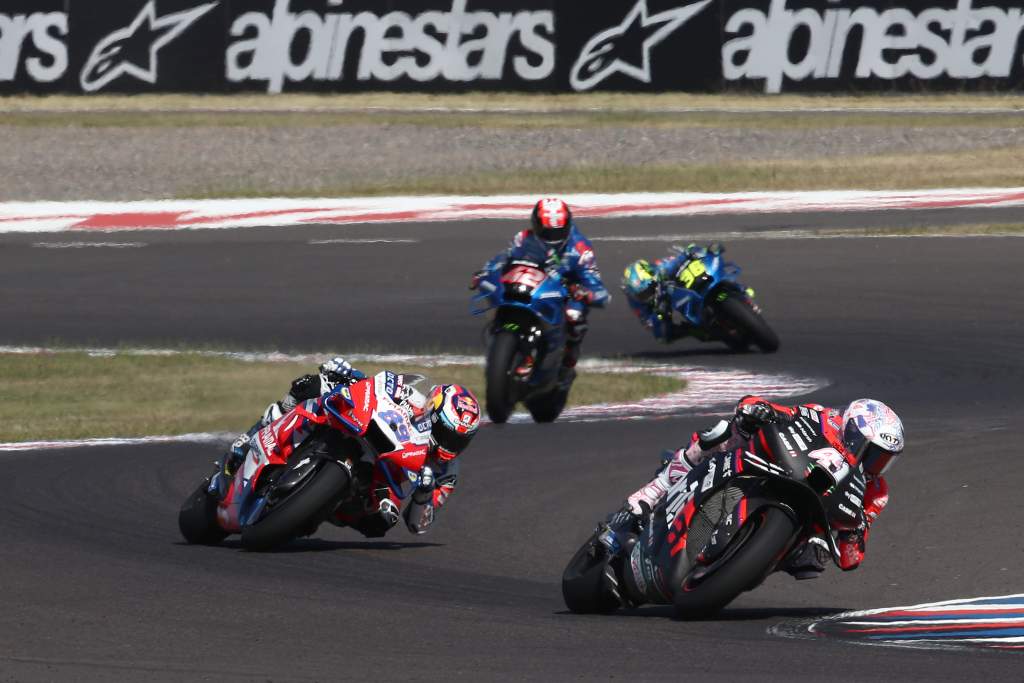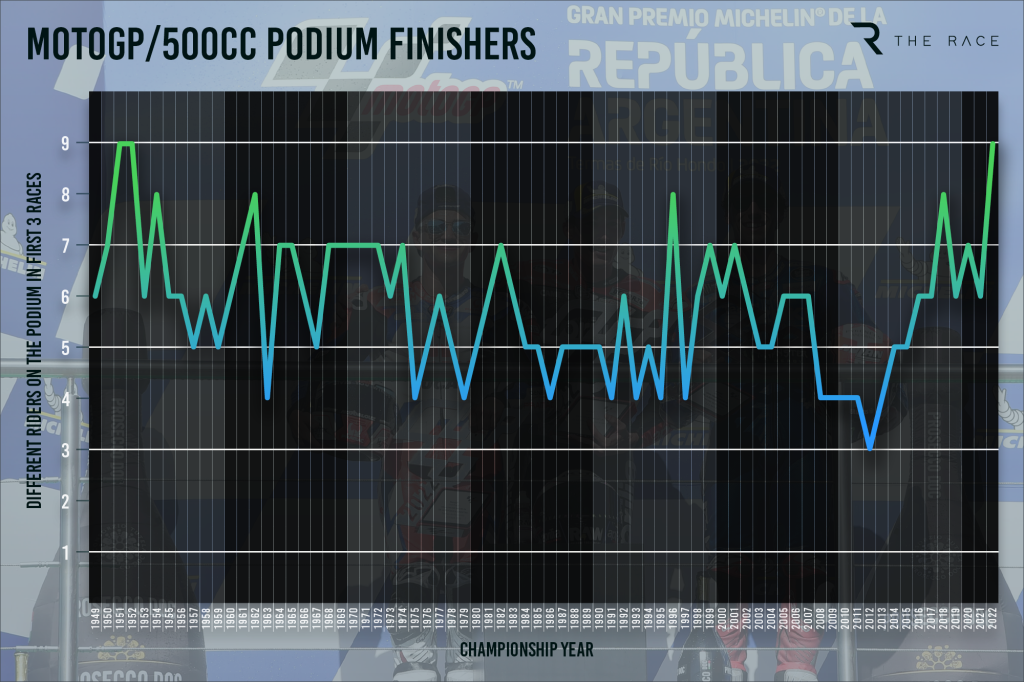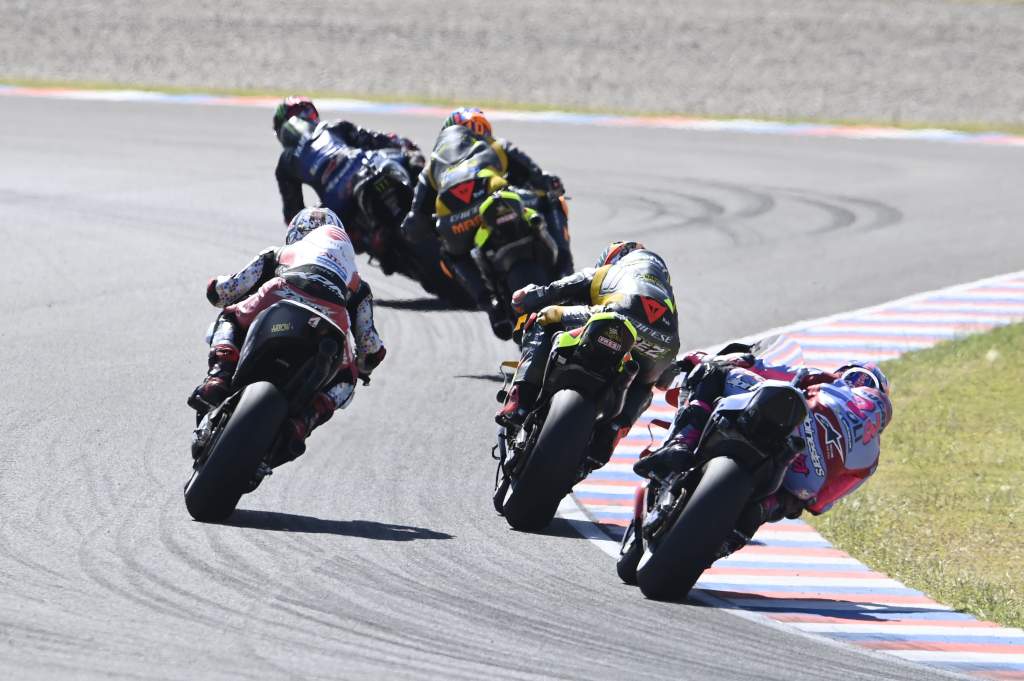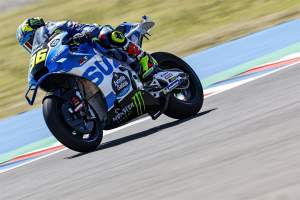until Abu Dhabi Autonomous Racing League

Most seasons of the MotoGP era, and the years immediately preceding it, have been defined by some form of dominance. Though the margins of said dominance inescapably varied, the premier-class has tended to favour a runaway champion more than a last-gasp title decider.
At the very least, there has usually been some form of hierarchy throughout the field.
That doesn’t mean it hasn’t experienced patches of, for the lack of a better term, ‘weirdness’. The 2016 season, which included a mid-year eight-race span that produced eight different winners, was the canary in the coalmine for MotoGP’s transition from a ‘works Hondas and Yamahas only’ show to much more of a free-for-all, while 2020 was particularly notable as the championship nobody seemed to want to win.
Even compared to those seasons, though, what we’ve seen in 2022 so far feels unmistakably stranger, a spell with no sustained favourites and no complete outsiders, as if run to the whims of a random number generator brought in to deal with an abundance of top-class riders on evenly-matched machinery.
The three races have been won by a KTM and an Aprilia – two bikes you will recognise as having finished second-to-last and last in the 2021 manufacturers’ standings – and a year-old Ducati. The championship leader, Aleix Espargaro, has 45 points compared to 70 for Moto2’s Celestino Vietti and 58for Moto3’s Sergio Garcia – and both Vietti and Garcia were much more natural picks for ‘potential championship leader’ than Espargaro.

Three races at three unique flyaway venues isn’t a great sample size – for all we know, it could be followed by 10 wins on the trot from Marc Marquez once he’s back in action. But whatever happens from now on, there is already a metric that does a decent job signifying why the start of the season has felt so wild.
That metric is, of course, the number of riders who have already graced the podium this season – which stands at the maximum possible nine, which is also nearly half of the 2022 full-timers.
“It’s chaos,” said KTM’s Brad Binder, one of the nine in question courtesy of his second-place finish in Qatar. “Looking at the list, the points aren’t that many, so it makes perfect sense. I think some tracks were better for some manufacturers, some better for some others.
“And I think it’s going to be an extremely exciting year for…well, it’s a great time to be a rider, but it’s also a great time to be a spectator, probably better as a spectator!”
Nine podium finishers in three races doesn’t sound that crazy – it is a single-digit number after all. And it’s not unprecedented. Except, for all intents and purposes, it is.
Most podium finishers in first three races (500cc/MotoGP)
1951, 9 riders – Masetti, Wood, Artesiani, Anderson, Armstrong, Lorenzetti, Duke, Doran, McCandless
1952, 9 riders – Brett, Doran, Bandirola, Armstrong, Graham, Amm, Masetti, Duke, Kavanagh
2022, 9 riders – Bastianini, Binder, P. Espargaro, Oliveira, Quartararo, Zarco, A. Espargaro, J. Martin, Rins
1954, 8 riders – Monneret, Milani, Collot, Amm, Duke, Brett, Kavanagh, L. Martin
1962, 8 riders – Hocking, Boyce, Stevens, Hailwood, Minter, Read, Shepherd, Godfrey
1996, 8 riders – Cadalora, Barros, Checa, Doohan, Capirossi, Abe, Criville, Russell
2018, 8 riders – Dovizioso, Marquez, Rossi, Crutchlow, Zarco, Rins, Vinales, Iannone
Eventual champion in bold
In the MotoGP era, three fully different podiums to start the season is a novelty. And even for the original premier class, the 500cc, you have to go back to the very start of world championship grand prix racing to find the two other instances.
The first one is season three, in 1951, won by Geoff Duke for Norton. The second is its follow-up, 1952, won by Umberto Masetti for Gilera.
But that, of course, was a very different world. Only the best five results in an eight-race season counted, and neither Duke nor Masetti ran the full schedule. Finishing rates weren’t phenomenal (though better than you might expect) and the presence of the Isle of Man TT in an early-season slot seemed to create podiums that didn’t much align with the rest of the season, what with Gilera – now part of the Piaggio Group – not attending it until later that decade.

For all the ‘weirdness’ that would happen in the many years to come across 500cc and then MotoGP, the stat was not being repeated – this despite there being the occasional early-season race that top riders would boycott on safety grounds, leaving local entrants to swoop in and occupy the podium instead.
It did very nearly happen in 2018, but only insofar as Termas served up a truly peculiar race in which Marquez – who had the pace to win easily and was on the podium in the preceding race and the following race – barged into Espargaro and Valentino Rossi. Still, that was eight riders – not nine – on the podium in three races.
Looking at the historic rates in this very specific metric, this kind of start to a season would’ve been virtually unthinkable a decade ago – for perfect symmetry, 2012 had served up the only season on record so far in which the same three riders were on the podium in each of the first three races.
What’s most gripping about the way 2022 has started, though, is that it didn’t take outrageous circumstances to come up with three totally different podiums. Every rider who has stood on a MotoGP rostrum in 2022 also stood on a MotoGP rostrum at least once in previous years. And while it rained hard at Mandalika and the freight delay played a big part at Termas, none of the races have been outwardly wacky – the first of those, in Indonesia, was an all-wet race (on a surface with really good grip in the wet) rather than flag-to-flag madness, and the second felt perfectly conventional.

It will not stay this erratic – mathematically, it cannot. But while such a start is a freak occurrence historically, it is not a freak occurrence logically. The outcomes have made sense.
In fact, for a series where the fastest rider’s fastest lap and the 10th-fastest rider’s fastest lap were 0.236s apart in a race at a 100-second venue like Termas, perhaps we shouldn’t expect anything else.


